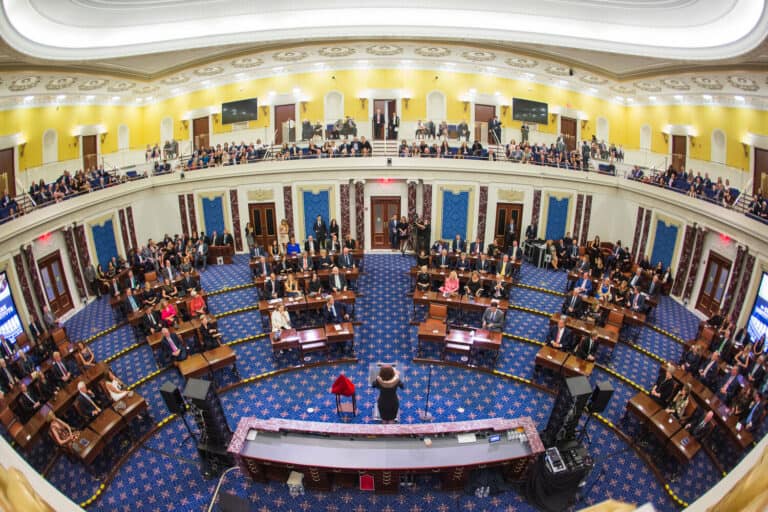Divya Nimmagadda is a student at Harvard Law School.
This is the second in a two-part post about the Remedy Clause. This post goes into detail about future use cases, while the first post provides a general overview.
As noted in the first post, the Remedy Clause remains relatively underdeveloped in case law, leaving its scope and contours largely undefined. That initial discussion highlighted two concrete ways the Clause has already been used to advance worker protections: by extending common law remedies to undocumented workers and by placing limits on legislative rollbacks of workers’ compensation schemes. This post builds on that foundation by exploring other potential pathways for leveraging the Clause to strengthen labor and employment rights.
Protection Against Retaliatory Dismissals
In 49 states, employment relationships are presumed to be “at-will,” allowing employers to terminate workers without cause. Some cities have created industry-wide statutory carveouts to this default — NYC has passed legislation ending at-will employment for fast-food workers, and Philadelphia has done the same for parking attendants. However where there is no statutory protection, a well-established common law exception prohibits terminations that violate public policy. Traditionally, this exception applies when an employer fires a worker for actions that are legally protected or socially valuable — such as serving on a jury or reporting illegal activity. Courts generally require that the source of public policy be found in a statute, regulation, or constitutional provision.
The Right to Remedy Clause presents an opportunity to expand this doctrine by identifying a novel constitutional source of public policy: the fundamental right of individuals to seek redress through the courts. In Fortunato v. Office of Stephen M. Silston (2004), a Connecticut trial court considered a claim by a woman who alleged she was fired in retaliation for her daughter filing a medical malpractice lawsuit against the employer. The court allowed the claim to proceed, reasoning that the constitutional guarantee of open courts could support a wrongful termination claim where an employer retaliates — even indirectly — for another person’s attempt to access the legal system. As the court explained:
“It seems to this Court that in the arena of constitutional/public policy interests sufficient to support a tort action for wrongful termination, one such interest is the unfettered right of legal/court redress….
“It ought not to matter that the clearer constitutional/public policy abrogation appears to direct itself against the daughter…. The alleged malignant conduct is focused upon, and motivated by, the exercise of an important right….“
In other words, chilling someone’s use of the courts through retaliation undermines the constitutional principle of legal redress. This reasoning extends the Remedy Clause from a guarantee of judicial access to a substantive employment protection. While this theory has not yet been widely adopted, it remains an open and promising avenue. If courts continue to recognize the right to seek legal remedy as a public policy interest, the Clause could support a new class of wrongful discharge claims grounded not in narrow statutes but in broad constitutional values.
As above, this approach could be especially useful in retaliation cases where workers are disciplined or fired for taking actions such as filing an unfair labor practice charge, reporting workplace safety violations, or testifying on behalf of another worker. While many of these scenarios may already be covered by specific anti-retaliation statutes, pursuing a wrongful discharge claim based on the Remedy Clause has strategic advantages. First, the common law route may allow for broader relief, including punitive damages. Second, it may shift the burden of proof and insulate the claim from statutory limitations—potentially requiring a higher justification from the employer than what some retaliation statutes demand. Third, it may offer undocumented workers a stronger litigation pathway. As discussed in the first post, under Hoffman Plastic Compounds, undocumented workers are denied NLRA back-pay remedies due to conflict with federal immigration law. But in states like Indiana, courts have held that the Remedy Clause guarantees access to courts for undocumented workers, opening the door for tort-based retaliation claims even where federal statutes fall short.
Finally, it is worth noting that case law remains unclear on whether the Remedy Clause is limited to access to state remedial forums or also extends to federal courts. At a minimum, however, it encompasses access to state administrative agencies, and the underlying logic of the right should support access to federal agencies as well — especially given that state wrongful termination tort claims are often grounded in rights established by the federal Constitution.
Combine with Other Protections to Combat Remedial Coverage Gaps
Combining the Right to Remedy Clause with a state’s Equal Protection or Due Process Clause creates a powerful constitutional strategy for advancing labor and employment rights, particularly for workers who have historically been excluded from full legal protection. Together, these clauses allow courts to address both the denial of remedies and the inequities in how remedies are distributed or accessed.
This layered approach becomes especially potent in cases where courts recognize access to a remedy as a fundamental, constitutional right. In several states, including Florida, Colorado and Oklahoma, courts have, at times, applied heightened or strict scrutiny when a statute or government action interferes with the constitutional guarantee of a remedy. This means the government must show a compelling interest and narrowly tailored means—an especially high bar when workers are denied rights or remedies. As the Florida Supreme Court explained back in 2001:
“There is no relevant difference between the ‘compelling governmental interest/strict scrutiny’ test for substantive due process and equal protection claims and the ‘no alternative method of correcting the problem/overpowering public necessity’ test for claims under the state constitutional provision guaranteeing access to courts.“
However, the doctrine remains underdeveloped. Courts have yet to clearly define when heightened scrutiny applies under the Remedy Clause—some link it to the fundamental nature of the right at stake, while others distinguish between procedural and substantive denials. Mandatory arbitration clauses, excessive filing fees, and impossibly short statutes of limitations may all be viewed as procedural barriers that effectively deny access to remedies; the actual content of the remedy, such as a damages cap or exclusions of certain worker groups, would be considered substantive.
This area of law is ripe for further development, particularly in contexts where Equal Protection or Due Process claims would otherwise be subject only to rational basis review. For instance, even if wage theft laws exist on the books, undocumented or gig workers are often denied meaningful enforcement due to their legal status or employment classification. Such exclusions can be challenged not only as Equal Protection violations—treating similarly situated workers differently without adequate justification—but also as Remedy Clause violations, where denial of access to the courts undermines the constitutional guarantee of redress. While gig workers may not qualify as a protected class for purposes of strict scrutiny under Equal Protection, if their ability to seek a remedy is obstructed, the Remedy Clause may independently trigger heightened judicial scrutiny.
Workers are already increasingly turning to state constitutional provisions to expand labor and employment rights. In Martinez-Cuevas v. DeRuyter Brothers Dairy, Inc. (2020), the Washington Supreme Court struck down a law that excluded agricultural workers— who were predominantly Latinx and immigrant laborers—from overtime protections. While the ruling was based in the state’s Privileges and Immunities Clause, the reasoning could also be framed through the lens of the Remedy Clause: excluding a category of workers from overtime laws not only violates equality principles but also denies them the ability to seek redress for wage theft. Moreover, the Court’s recognition of access to a safe workplace as a “fundamental right of state citizenship” opens the door to treating the right-to-a-remedy on similar terms.
Taken together, these various clauses form a robust constitutional apparatus. One can argue not only that all workers should be covered by labor protections, but that those protections must be accessible, enforceable, and free from arbitrary or discriminatory limitations. By invoking these clauses in tandem, litigators can push for systemic changes in labor law enforcement, challenge exploitative practices that target vulnerable workers, and expand the reach of constitutional labor protections in a time of increasing precarity.










Daily News & Commentary
Start your day with our roundup of the latest labor developments. See all
November 7
A challenge to a federal PLA requirement; a delayed hearing on collective bargaining; and the IRS announces relief from "no tax on tips" reporting requirements.
November 6
Starbucks workers authorize a strike; Sixth Circuit rejects Thryv remedies; OPEIU tries to intervene to defend the NLRB.
November 5
Denver Labor helps workers recover over $2.3 million in unpaid wages; the Eighth Circuit denies a request for an en ban hearing on Minnesota’s ban on captive audience meetings; and many top labor unions break from AFGE’s support for a Republican-backed government funding bill.
November 4
Second Circuit declines to revive musician’s defamation claims against former student; Trump administration adds new eligibility requirements for employers under the Public Service Loan Forgiveness program; major labor unions break with the AFGE's stance on the government shutdown.
November 3
Fifth Circuit rejects Thryv remedies, Third Circuit considers applying Ames to NJ statute, and some circuits relax McDonnell Douglas framework.
November 2
In today’s news and commentary, states tackle “stay-or-pay” contracts, a new preliminary injunction bars additional shutdown layoffs, and two federal judges order the Trump administration to fund SNAP. Earlier this year, NLRB acting general counsel William Cowen rescinded a 2024 NLRB memo targeting “stay-or-pay” contracts. Former General Counsel Jennifer Abruzzo had declared that these kinds […]